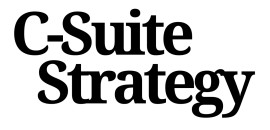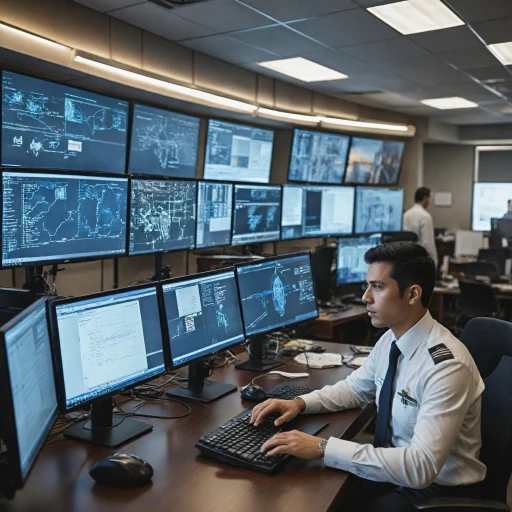
Understanding the role of detailed model review in executive decision-making
Why detailed model reviews matter for executive decisions
In the process industries, the quality of executive decision-making often hinges on the accuracy and depth of model reviews. Whether it’s piping design, equipment layout, or software development, models serve as the backbone of engineering design and project planning. For CEOs, understanding how these reviews shape project outcomes is essential for aligning strategy with operational realities.
Model reviews are not just technical checkpoints. They are critical stages where engineering requirements, dimensional drawings, and stress analysis converge to inform business risk, cost, and schedule. A well-structured review model ensures that project engineers, review teams, and project managers can identify gaps early, reducing the risk of costly rework or missed deadlines. This is especially true in complex projects where multiple disciplines—such as piping, equipment, and software—must work in harmony.
Connecting model review to strategic leadership
For the C-suite, the implications of model reviews go beyond technical compliance. Formal reviews and review checklists provide a structured approach to quality assurance, but their true value lies in supporting strategic objectives. Effective model reviews help leadership teams make informed decisions about resource allocation, risk mitigation, and project prioritization. This is where the intersection of engineering and executive leadership becomes most apparent.
Integrating detailed model review into the broader context of leadership team development ensures that technical insights are translated into actionable business strategies. When reviews are conducted at the right stage, with the right review procedure, they empower executives to steer projects toward successful outcomes—balancing innovation, compliance, and profitability.
- Model reviews validate that engineering design meets project requirements
- Review comments and formal reviews highlight critical lines and potential risks
- Review stages and checklists standardize quality across teams and projects
- Review teams, including full-time and project-based engineers, ensure thorough evaluation
Ultimately, CEOs who champion robust model review processes position their organizations for sustainable growth and competitive advantage. The next sections will explore the essential components of an effective review process and how to overcome common challenges in model reviews.
Key components of an effective model review process
Building a Robust Model Review Framework
For CEOs and the c-suite, understanding what makes a model review process effective is essential for driving project success in process industries. A strong review framework ensures that engineering design, piping, and modeling efforts align with business objectives and regulatory requirements. The process is not just about checking boxes; it’s about ensuring quality, reducing risk, and enabling informed decision-making at every stage of development.
- Clear Review Stages: Model reviews should be structured across key project milestones. Early-stage reviews focus on requirements and conceptual design, while later reviews address detailed engineering, dimensional drawings, and stress analysis. Each stage must have defined objectives and deliverables.
- Comprehensive Review Checklist: A standardized checklist helps the review team cover all critical aspects, from equipment layout and piping design to software integration and safety requirements. This ensures consistency and thoroughness across reviews.
- Multidisciplinary Review Team: Effective model reviews require input from project engineers, design specialists, and quality assurance professionals. Collaboration across disciplines helps identify issues in modeling, design, and data integration that might otherwise be missed.
- Formal Reviews and Documentation: Each review should be documented with clear review comments and action items. Formal reviews provide traceability and accountability, supporting continuous improvement and compliance.
- Integration with Project Management: The review procedure must be embedded in the overall project workflow. Project managers play a key role in ensuring that reviews are scheduled, resourced, and that feedback is implemented promptly.
Quality model reviews are not just a technical exercise—they are a strategic tool for CEOs to manage risk and drive value. By focusing on these components, leaders can ensure that models are not only technically sound but also aligned with the broader goals of the organization. For more on the human side of leadership and decision-making, explore navigating the solitude of leadership in the c-suite.
Common challenges CEOs face during model reviews
Why model reviews can stall progress
For CEOs, model reviews are a critical part of ensuring engineering design quality and project success. Yet, these reviews often become bottlenecks, slowing down development and impacting project timelines. Understanding the root causes can help leaders anticipate and address these challenges.
- Complexity of requirements: In process industries, models must meet a wide range of requirements, from piping design and equipment placement to stress analysis and dimensional drawings. Keeping track of all these elements during each review stage can overwhelm even experienced project engineers.
- Fragmented review teams: Model reviews often involve cross-functional teams, including engineering, software, and project management. Misalignment between stakeholders or unclear review procedures can result in missed issues or duplicated work.
- Volume of data: Modern projects generate vast amounts of data. Reviewing every detail—especially in large-scale developments—can be daunting. Without a clear review checklist and robust review model, critical lines or equipment may be overlooked.
- Inconsistent review comments: Feedback from formal reviews can vary widely in quality and focus. If review comments are not standardized or tracked, it becomes difficult to ensure that all concerns are addressed before the next stage.
- Resource constraints: Many organizations lack full-time staff dedicated to model reviews. Project managers and engineers often juggle multiple responsibilities, making it hard to give reviews the attention they require.
Bridging the gap between review and execution
Another challenge is translating review outcomes into actionable improvements. Even when issues are identified, integrating changes into the engineering design or software development workflow can be slow. This disconnect can lead to repeated reviews of the same issues, frustrating both the review team and project stakeholders.
To address these pain points, some organizations are redefining roles and responsibilities. For example, clarifying the project engineer’s role in model reviews can help streamline communication and ensure accountability throughout the review stages.
Ensuring quality without slowing down
Ultimately, CEOs must balance the need for thorough model reviews with the pressure to deliver projects on time and within budget. By recognizing these common challenges and proactively addressing them, leaders can foster a culture of quality and continuous improvement in engineering design and project execution.
Best practices for integrating model review into strategic planning
Embedding Model Reviews in Strategic Workflows
For CEOs, integrating model review into strategic planning is not just about compliance—it is about ensuring that every stage of engineering design and development aligns with business objectives. Model reviews act as a critical checkpoint, helping project teams validate that design, data, and requirements are on track before moving to the next stage. This is especially important in process industries, where the complexity of piping design, equipment selection, and stress analysis can introduce significant risks if not properly reviewed.
Building a Structured Review Procedure
To embed model reviews effectively, organizations should establish a formal review procedure. This includes:
- Defining clear review stages, from initial modeling to final dimensional drawings
- Creating a review checklist tailored to project requirements and engineering standards
- Assigning a dedicated review team, including the project engineer, project manager, and relevant discipline leads
- Scheduling full time for formal reviews at critical points in the project lifecycle
- Documenting review comments and ensuring follow-up actions are tracked and closed
Aligning Reviews with Project Milestones
Model reviews should be synchronized with key project milestones. For example, a review will typically be required before procurement of major equipment or before construction begins. This ensures that any issues in the model, such as critical lines or piping clashes, are identified and resolved early, reducing costly rework and delays.
Ensuring Quality and Accountability
Quality in model reviews comes from both process rigor and team accountability. Encourage engineers to treat reviews as opportunities for improvement, not just as a formality. A robust review model includes regular feedback loops, clear documentation, and transparent communication between engineering, project management, and development teams. This helps ensure that the final design meets both technical and business requirements.
Continuous Improvement Through Lessons Learned
After each project, conduct a retrospective to assess the effectiveness of the review procedure. Gather input from the review team, project engineer, and stakeholders to refine the review checklist and process for future projects. This commitment to continuous improvement strengthens the organization’s ability to deliver high-quality engineering design and execution.
Leveraging technology to enhance model review
Bringing Digital Tools into the Model Review Workflow
Integrating technology into the model review process is no longer optional for companies aiming to stay competitive in process industries. Digital solutions can transform how engineering design, piping, and equipment models are reviewed, making the process more efficient and transparent. The right tools help project engineers and managers keep track of review comments, monitor review stages, and ensure that requirements are met at every development stage.
- Centralized review platforms: Modern software platforms allow the review team to access models, dimensional drawings, and review checklists in one place. This reduces the risk of miscommunication and ensures that every model review is documented and traceable.
- Automated quality checks: Many tools now offer automated checks for piping design, stress analysis, and critical lines. These features help engineers catch issues early, reducing the need for time-consuming formal reviews later in the project.
- Collaboration features: Digital solutions enable real-time collaboration among project engineers, designers, and managers. This is especially valuable for global teams working full time across different locations, ensuring that reviews model progress and feedback are always up to date.
- Data-driven insights: By leveraging analytics, companies can identify bottlenecks in the review procedure, track the effectiveness of review stages, and continuously improve the process. This data-driven approach supports better decision-making at the executive level.
Ensuring Technology Aligns with Project Requirements
While technology can enhance the model review process, it is essential to align digital tools with the specific requirements of each project. Not every software solution will fit every engineering design or development workflow. Project managers should work closely with engineers to select tools that support the unique needs of their models, equipment, and review procedures.
Ultimately, technology should support—not replace—the expertise of your engineering and review teams. When thoughtfully integrated, digital solutions can help companies achieve higher quality outcomes, reduce project risks, and streamline the entire model review process from initial modeling to final approval.
Case examples: detailed model review in action
Real-World Impact: Model Review in Process Industries
Model review is not just a theoretical exercise. In process industries, the review process is a cornerstone for ensuring that engineering design aligns with project requirements and operational realities. For example, during the development of a new chemical plant, the project engineer leads a series of formal reviews at each stage of modeling. These reviews model everything from piping design to equipment placement, using dimensional drawings and stress analysis to validate every detail.
How Review Teams Drive Quality and Compliance
Review teams, often composed of engineers, project managers, and quality assurance specialists, work together to scrutinize models against a detailed review checklist. This checklist covers critical lines, piping, and equipment, ensuring that every aspect of the engineering design meets safety and regulatory standards. The review procedure typically includes multiple review stages, with each stage focusing on specific elements such as software integration, piping, or stress points.
Lessons from Model Review Failures and Successes
- Missed Requirements: In one project, skipping a full-time review of the piping design led to costly rework when dimensional drawings revealed misalignments. This highlights the importance of thorough reviews at every stage.
- Effective Use of Data: Another case saw a project engineer use advanced modeling software to simulate equipment loads. Early detection of stress issues through data-driven reviews prevented downstream failures and kept the project on schedule.
- Review Comments as a Tool for Improvement: Projects that actively collect and address review comments during each review stage consistently report higher quality outcomes and fewer late-stage surprises.
Embedding Model Review in Project Culture
Successful organizations treat model review as an ongoing, integrated part of engineering development. The review will not be a one-off event but a continuous process, with formal reviews scheduled at key milestones. This approach ensures that models are reviewed and refined in real time, reducing the risk of errors and enhancing overall project quality.
Key Takeaways for the C-Suite
| Aspect | Impact |
|---|---|
| Review Team Engagement | Drives accountability and cross-functional alignment |
| Data-Driven Modeling | Enables proactive identification of design issues |
| Formal Review Procedure | Ensures compliance and quality at every stage |
For CEOs, embedding a robust model review process into the project lifecycle is not just about compliance. It is a strategic lever for reducing risk, optimizing resources, and ensuring that engineering projects deliver on their promise.













